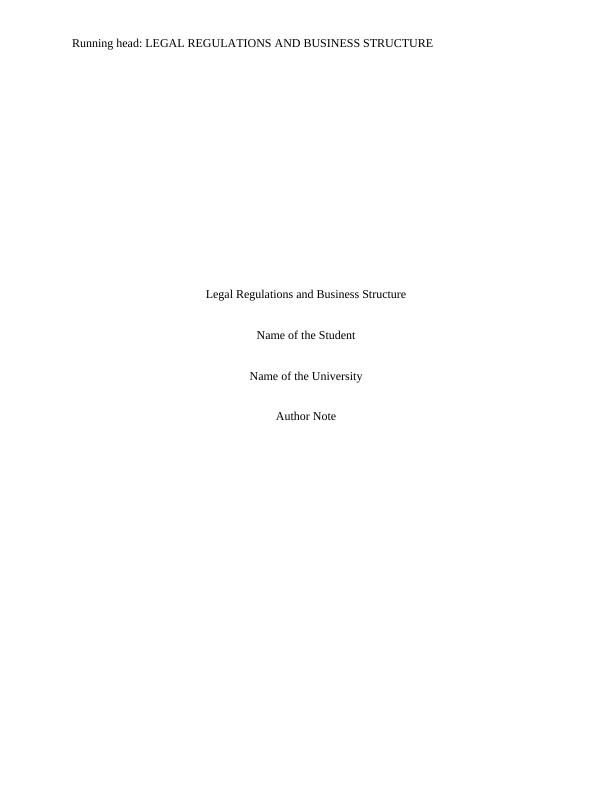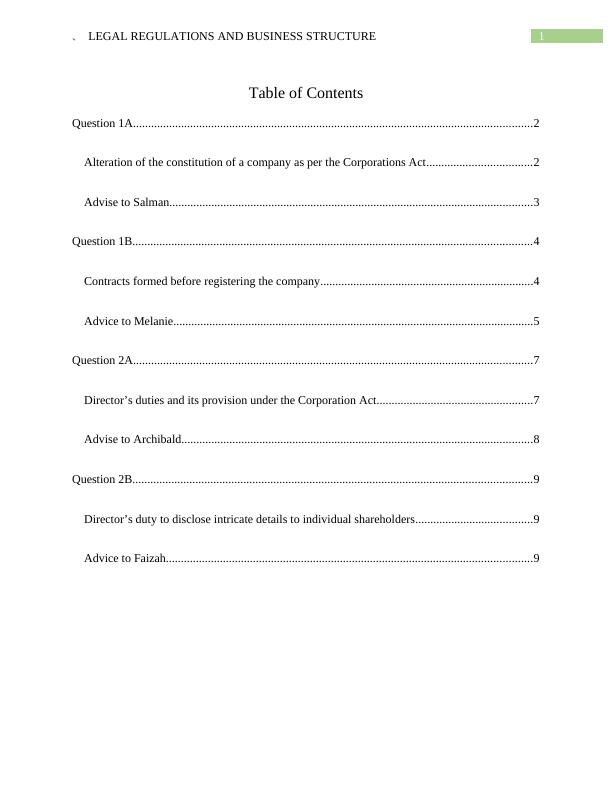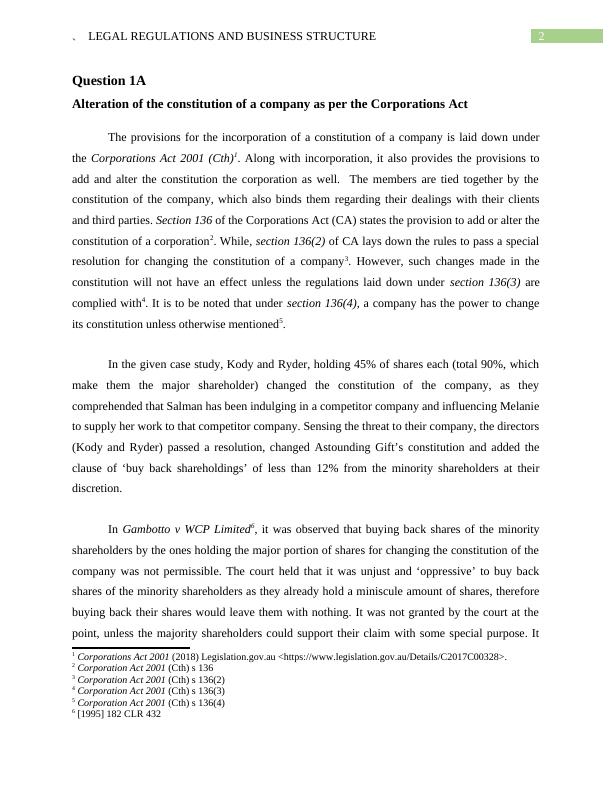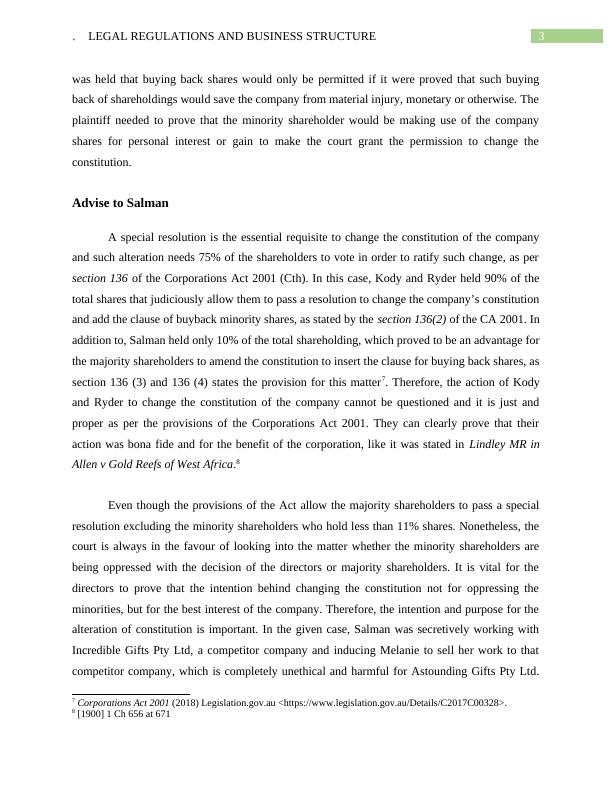Legal Regulations and Business Structure
12 Pages3408 Words251 Views
Added on 2023-06-05
About This Document
This study material discusses legal regulations and business structure in detail. It covers topics such as alteration of constitution, contracts formed before registering the company, and director's duties. The material provides advice to individuals in different scenarios and cites relevant cases to support the arguments. The subject is not specified, but it is relevant to business law. The course code and college/university are not mentioned.
Legal Regulations and Business Structure
Added on 2023-06-05
ShareRelated Documents
End of preview
Want to access all the pages? Upload your documents or become a member.
Legal Regulations and Business Structures
|13
|2983
|376
Legal Regulation of Business Structures and Duties of Directors in Australia
|11
|2851
|391
Legal Regulation and Business Structure - Desklib
|12
|3074
|241
Business Law: Alteration of Constitution, Contracts before Registration, and Directors' Duties
|10
|2904
|499
Legal Analysis of Company Law Issues in Two Scenarios
|8
|2563
|110
Legal Regulations of Business Structures: Compliance of Company Directors with Duties and Procedures
|10
|3615
|216




